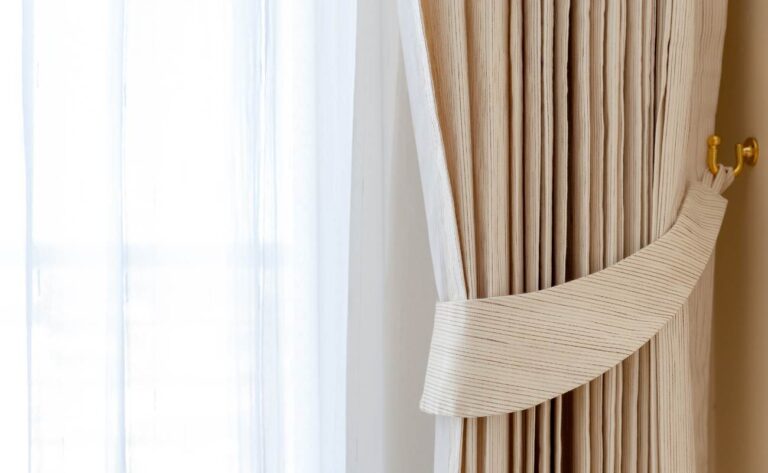Table of Contents

Keeping your home’s cellular shades clean doesn’t have to be a mystery. When you know how to clean cellular shades correctly, you extend their lifespan and preserve the inviting ambiance they bring to your space. In this guide, you’ll discover why regular cleaning matters, how to prepare, and the best methods to ensure those shades stay vibrant for years to come. By the time you finish reading, you’ll feel confident enough to tackle dust, stains, and everything in between, all while maintaining your sense of style and comfort.
WHY REGULAR CLEANING MATTERS
Cellular shades—often called honeycomb shades—aren’t just decorative pieces; they serve a functional purpose by helping insulate your windows. Over time, dust and dirt settle into the delicate cells, diminishing the sleek, crisp look you originally fell in love with. By keeping your shades free of debris, you ensure they continue to control light effectively and help with energy efficiency. You’ll also prevent permanent discoloration or damage that can occur when stains sit for too long.
Moreover, regularly cleaned shades simply make you feel better about your space. There’s something invigorating about letting fresh sunlight filter through spotless fabric. You safeguard your health as well, especially if anyone in your home is sensitive to dust or allergens. When your shades are clean, you won’t worry about dust drifting into your breathing space every time you open or close them.
TYPES OF CELLULAR SHADES AND CLEANING CONSIDERATIONS
Before you grab a cloth or a vacuum, it helps to identify the type of cellular shades you have. Some shades have top-down/bottom-up functionality, allowing you to move them in both directions. Others may have cordless or motorized mechanisms. While the general cleaning approaches are similar for most cellular shades, certain features might need extra care:
- Cordless Shades: You’ll raise and lower your shades by gently lifting the bottom rail. Be mindful of applying too much pressure so you don’t distort the pleats.
- Motorized Shades: Ensure you follow the manufacturer’s instructions when you move the shades for cleaning. You might need to keep the motor safe from moisture or direct sprays.
- Blackout vs. Light Filtering: Blackout shades often have thicker fabrics or special linings, and you’ll want to be gentle to avoid damaging those layers.
TOOLS YOU’LL NEED
Gathering your cleaning tools ahead of time saves you from running back and forth mid-task. You’ll often get the best results using simple, common items you already have at home:
- Vacuum with Soft Brush Attachment: Great for removing loose dust and cobwebs without damaging the pleats.
- Microfiber Cloth or Soft Cloth: Perfect for wiping down any surface without leaving lint or scratches.
- Compressed Air Canister (Optional): Useful for blowing out dust from tight spots, such as the internal cells or headrail.
- Mild Detergent or Dish Soap: Essential for spot cleaning more stubborn stains. Choose a gentle, bleach-free formula.
- Warm Water: Helps to lift grime when combined with mild soap.
STEP-BY-STEP: LIGHT SURFACE CLEANING
Sometimes all you need is a quick dust-off or gentle vacuum. If your shades look only lightly dusty—perhaps with minimal grime—use the steps below to keep them fresh:
- Close the Shades: Gently pull them down (or up, if top-down) so they’re fully extended.
- Vacuum Gently: With the brush attachment, start at the top and work your way down each pleat. Use light pressure to avoid denting or stretching the fabric.
- Target Tricky Spots: If you see dust trapped in corners or the cord mechanisms, use a canister of compressed air or a small, soft-bristled brush.
- Double-Check: After vacuuming, step back and make sure you haven’t left any dust bunnies clinging to the folds.
This quick routine helps you stay on top of regular maintenance and keeps your shades from getting heavily soiled. Doing this once every couple of weeks goes a long way in preserving their pristine look.
DEEP CLEANING FOR STAINS AND HEAVY DIRT
Eventually, you might notice a spot of spilled coffee or a bigger buildup of dust than usual. That’s when you’ll need to do a deeper clean. With gentle but purposeful techniques, you can tackle heavier dirt without risking damage:
- Spot Test First: Before using any detergent, pick a small, inconspicuous area (like the back corner) and test the soap solution. Watch for any discoloration or weakening of the fabric.
- Create a Mild Solution: Mix a small amount of gentle dish soap or mild detergent with warm water. You want just enough soap to create light suds.
- Blot Don’t Rub: Dip your cloth into the soapy water, then gently blot the stained area. Rubbing too vigorously can cause pilling or distort the pleats. If the stain persists, you might need to repeat the blotting a few times.
- Rinse and Repeat: Use a second cloth dampened with plain water to remove any soap residue. Again, dab carefully, and avoid soaking the fabric.
- Let Them Dry: Leave the shades extended to air-dry fully before raising them. Opening and closing them while damp can lead to wrinkles or mildew issues.
TACKLING INTERNAL CELLS
Cellular shades stand out because of their signature honeycomb structure. Dust can settle inside those cells, making them look dull. You’ll typically address the interior dust during a routine vacuum, but stubborn buildup might require a more targeted approach:
- Use Compressed Air: Hold the canister’s nozzle a short distance from the opening of the cell. Give quick, controlled bursts of air to blow dust out the other end. This method works best outdoors or in a space where a little airborne dust won’t cause problems.
- Check Both Ends: If your shades have a double-cell design, ensure you clear out dust from each section for a uniform appearance.
MAINTAINING THE HEADRAIL AND HARDWARE
Clean cellular shades aren’t truly spotless if you overlook the headrail, bottom rail, and any hardware. These parts can accumulate grime and cobwebs over time, affecting both appearance and functionality:
- Remove Loose Dust: Wipe down rails and hardware with a microfiber cloth or vacuum brush attachment.
- Inspect Moving Parts: Check the cord, motor, or cordless mechanism to ensure they haven’t tangled or collected dust.
- Gentle Wipe with Mild Soap: If you see stains on plastic or metal surfaces, dampen a cloth with your mild soap solution and wipe gently, then dry thoroughly.
COMMON MISTAKES TO AVOID
While learning how to clean cellular shades can be straightforward, a few missteps can lead to unsightly damage or extra work:
- Skipping Regular Dusting: If you wait until stains appear, you risk dealing with permanent discoloration or set-in dirt.
- Using Harsh Chemicals: Bleach, strong detergents, or abrasive scrubbers can degrade the fabric and cause color fading.
- Excessive Soaking: Submerging your shades in water can disintegrate adhesives or warp the material. Stick to mild spot cleaning.
- Too Much Pressure: Pressing hard can crush the pleats or tear delicate edges. A light hand goes a long way.
HOW OFTEN SHOULD YOU CLEAN?
Consistency is everything. Light dusting every couple of weeks prevents buildup and quickly reveals any new stains that need attention. A deeper clean might be necessary every few months or whenever you notice noticeable grime. The key is listening to your environment. If you live in a dusty area or keep windows open often, you may find yourself cleaning more regularly than someone in a less dusty space.
PREVENTATIVE TIPS TO KEEP YOUR SHADES LOOKING NEW
Regular cleaning routines work best when paired with everyday preventative strategies. Here are a few to incorporate:
- Avoid Cooking Smoke: In kitchens, smoke or grease residue can cling to your shades. Use proper ventilation or a range hood to reduce this.
- Manage Humidity: If your environment is humid, mold can creep into the folds. Keeping a balance of ventilation and possibly a dehumidifier helps protect your shades.
- Gentle Operation: When raising or lowering your cellular shades, do so slowly. Sudden yanks on cords or rails can weaken the structure.
- Check for Bugs: Insects sometimes nest in cells. Regularly inspect your shades, particularly near windows that open. A quick vacuum can take care of unwelcome visitors.
YOUR FRESH AND BRIGHT CONCLUSION
Now that you’ve learned how to clean cellular shades with ease, you can focus on what truly matters: enjoying a comfortable, well-lit home that reflects your personal style. By dusting lightly and addressing spots when they appear, you ensure your shades remain a long-term investment rather than a short-lived accessory. The secret lies in consistency, using gentle cleaning methods, and understanding the type of cellular shades you have.
After applying these methods, you’ll feel a sense of accomplishment every time you open your shades to let the sunlight stream in. You’ll also appreciate how fresh everything feels—free from unnecessary dust and grime. Best of all, you’ll be surprised at how straightforward it can be once you’ve made these cleaning steps part of your home-care routine. So go ahead, give your shades some well-deserved attention and enjoy the renewed ambiance you’ve created.



